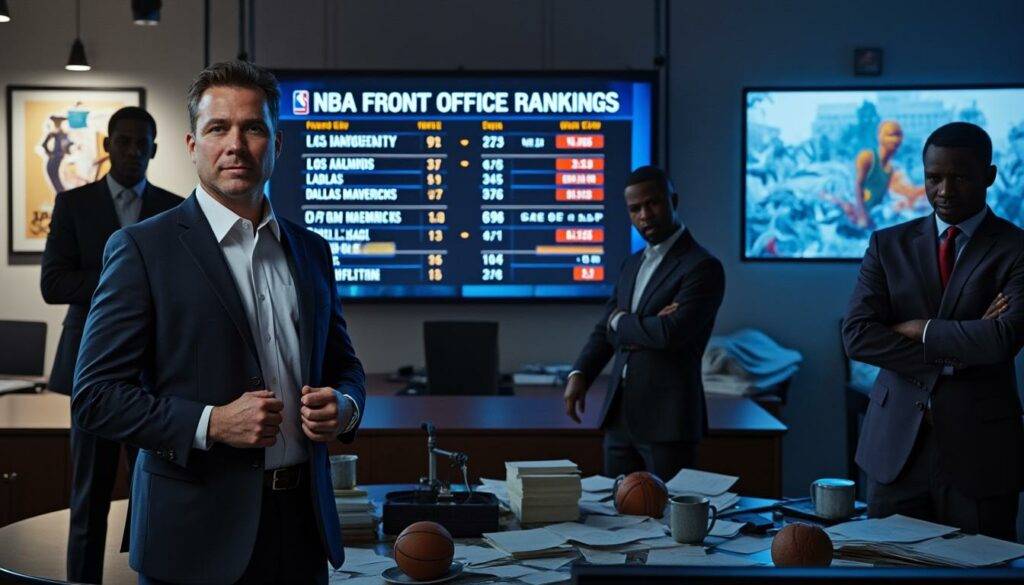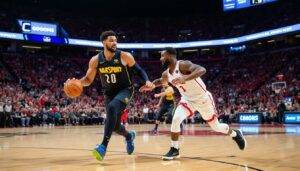Exploring NBA front office rankings: Oklahoma City Thunder leads the pack while Lakers and Mavericks struggle, and a new contender sits at the bottom behind the Bulls.

The NBA’s front office rankings reveal a league sharply divided between powerhouse executive teams and those struggling to find their footing. Leading the charge is the Oklahoma City Thunder, whose front office mastery under Sam Presti culminated in a long-awaited championship and a well-stocked arsenal of draft picks positioning them for future success. On the opposite end, spotlight falls on the Los Angeles Lakers and Dallas Mavericks, whose roster decisions and organizational strategies continue to stir skepticism. Even more concerning is the emergence of a new contender languishing behind the historically beleaguered Chicago Bulls, underscoring the widening gulf in effective basketball front-office management.
Oklahoma City Thunder’s Front Office Excellence Drives Rankings
There's simply no denying it: Oklahoma City Thunder’s front office is the gold standard in the NBA. Sam Presti’s ability to execute beyond accumulating draft picks sets them apart. Take Jalen Williams as an example — a No. 12 pick who transformed into an All-NBA caliber player by his third season, a feat only Kobe Bryant achieved before him at that draft position.
Key pillars of the Thunder’s front office success include:
- Strategic use of draft assets beyond sheer quantity.
- Flexibility to exploit league salary cap rules intelligently.
- An unshakable vision that balances championship aspirations with sustainable roster-building.
This approach taught the league an important lesson: dominance is as much about creativity and malleability as it is about raw talent acquisition.
Why the Thunder Outclass Their Peers in 2025 NBA Front Office Rankings
Unlike teams chasing flashy trades, the Thunder masterfully executed quiet moves like savvy drafting and value-packed trades, enabling deep roster development and avoiding crippling financial pitfalls. Considering the recent blockbuster moves elsewhere — such as the Mavericks’ bizarre decision to trade away Luka Dončić — OKC stands out as a beacon of long-term strategy.
For further insights on drafting strategies, check out this detailed NBA draft forecast, which aligns well with how the Thunder maximize every pick.
Los Angeles Lakers and Dallas Mavericks: Struggling Yet Star-Obsessed Organizations
Both the Los Angeles Lakers and Dallas Mavericks are caught in organizational limbo. Despite the Lakers’ allure as a destination and a recent shift in ownership towards a more modern, strategic model under Mark Walter, the franchise is still haunted by a lack of clear hierarchy and inconsistent team-building decisions.
- Failure to sustain young talent development — notably a string of premature abandonments.
- Overreliance on short-term deals that clog the cap and hinder roster continuity.
- Bias toward star power, often at the expense of role-player cohesion.
The Mavericks, meanwhile, squandered priceless lottery luck after landing prospect Cooper Flagg and have continued to push a lineup lacking balance, making questionable decisions around aging stars and point-of-attack defense — quite the opposite of a championship-minded front office approach.
Interestingly, the chaotic Dallas moves echo some of the strange decisions chronicled in the Lillard-Blazers trade saga, where impatient front offices act first and analyze consequences later.
Inside the Lakers’ Leadership Quagmire and Mavericks’ Organizational Missteps
The Lakers’ tangled decision-making process involves too many cooks: ownership, executives, agents, and former legends – none holding decisive control. This merry-go-round stunts their ability to capitalize on the full potential of their young prospects like Scotty Pippen Jr. and Jay Huff.
Simultaneously, the Mavericks’ unwillingness to pivot from their star-era philosophy risks wasting Cooper Flagg’s rookie deal and future contributions.
New Contender’s Struggles Deepen, Lagging Even Behind Chicago Bulls
A remarkable development this year is a new front-office contender falling behind the Chicago Bulls, a team long regarded as struggling with basketball operations. The Bulls’ failure to accumulate substantial trade assets, poor draft management, and lack of cohesive vision have kept them at the bottom of front-office rankings for years.
- Repeatedly trading valuable players for questionable returns.
- Reluctance to pay rising talents, creating tension in the roster.
- Organizational instability reflecting in roster inconsistencies year over year.
The new bottom-dwelling team echoes many of these flaws, underscoring how quickly poor decision-making can sink an organization's credibility and prospects.
Lessons From the Bottom: When Poor Front Office Leadership Costs Team Performance
Considering the NBA’s competitive landscape, the cost of neglecting strategic front-office operations manifests in team performance declines and lost fan engagement.
Teams like the Bulls exemplify this, but the looming contender below them tells another cautionary tale about how not adapting to the modern NBA’s demands can be disastrous.
Additional Insights Into NBA Front Office Rankings and Their Impact on Team Success
- Top executives prioritize flexibility and adaptability over rigid team-building philosophies.
- Smart cap management and long-term asset accumulation remain key differentiators.
- Transparency and unified leadership reduce costly missteps and build winning cultures.
- Draft success combined with shrewd trades compound positive effects on roster health.
The NBA front office rankings tell a vital story about how smart management transcends player talent alone in defining a team’s performance and championship trajectory. For fans and insiders alike, these rankings deserve close attention.

